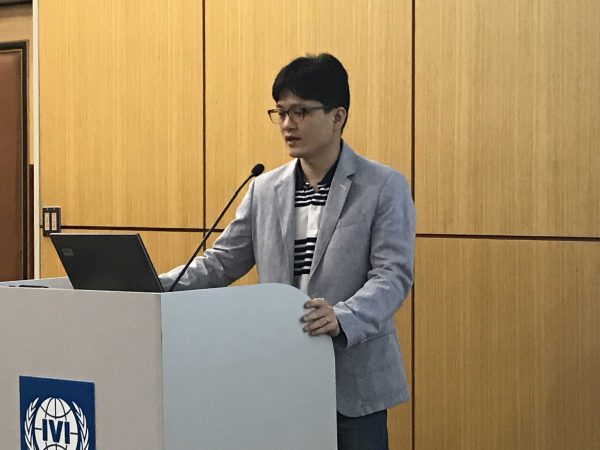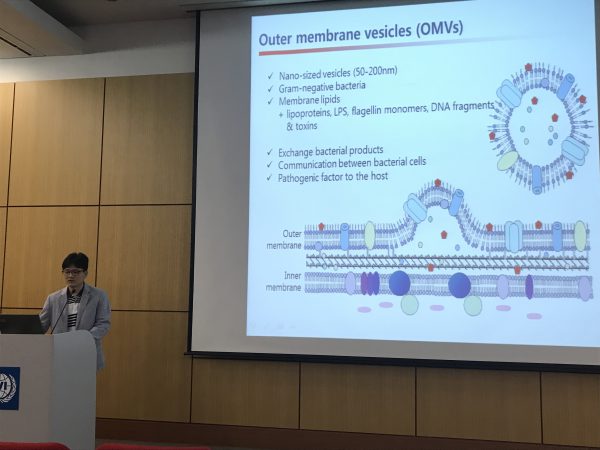
Dr. Doo-Jin Kim, Senior Researcher, Infectious Disease Research Center at the Korea Research Institute of Bioscience & Biotechnology (KRIBB)
Dr. Doo-Jin Kim, Ph.D., Senior Researcher from the Infectious Disease Research Center of the Korea Research Institute of Bioscience & Biotechnology, delivered a lecture entitled: “Immunomodulatory effects of bacterial outer membrane vesicles (OMVs) & their application to influenza vaccines” on May 31, 2019 at IVI headquarters. The lecture was conducted as part of the 2019 IVI Seminar Series: The Present and Future of Vaccine Development. This Seminar was made possible by the Chong Kun Dang Kochon Foundation.

Dr. Doo-Jin Kim explaining OMVs
Abstract:
Influenza A virus (IAV) poses a constant worldwide threat to human health. Although conventional vaccines are available, their protective efficacy is type- or strain-specific, and their production is time-consuming. For the control of an influenza pandemic in particular, agents that are immediately effective against a wide range of virus variants should be developed. Although pretreatment of various Toll-like receptor (TLR) ligands have already been reported to be effective in the defense against subsequent IAV infection, the efficacy was limited to specific subtypes, and safety concerns were also raised. In this study, we investigated the protective effect of an attenuated bacterial outer membrane vesicle, harboring modified lipid A moiety of lipopolysaccharide (fmOMV) against IAV infection, and the underlying mechanisms. Administration of fmOMV conferred significant protection against a lethal dose of pandemic H1N1, PR8, H5N2, and highly pathogenic H5N1 viruses; this broad antiviral activity was dependent on macrophages but independent of neutrophils. fmOMV induced recruitment and activation of macrophages, and elicited type I IFNs. Intriguingly, fmOMV showed a more significant protective effect than other TLR ligands tested in previous reports, without exhibiting any adverse effects. These results show the potential of fmOMV as a prophylactic agent for the defense against influenza virus infection.






